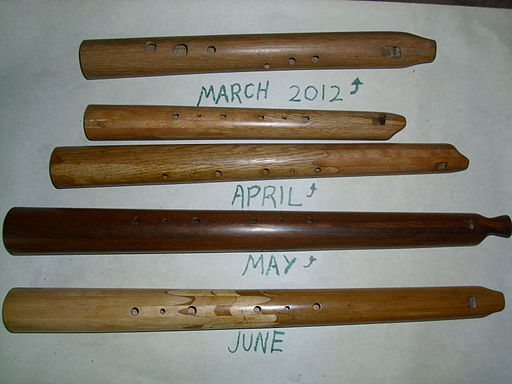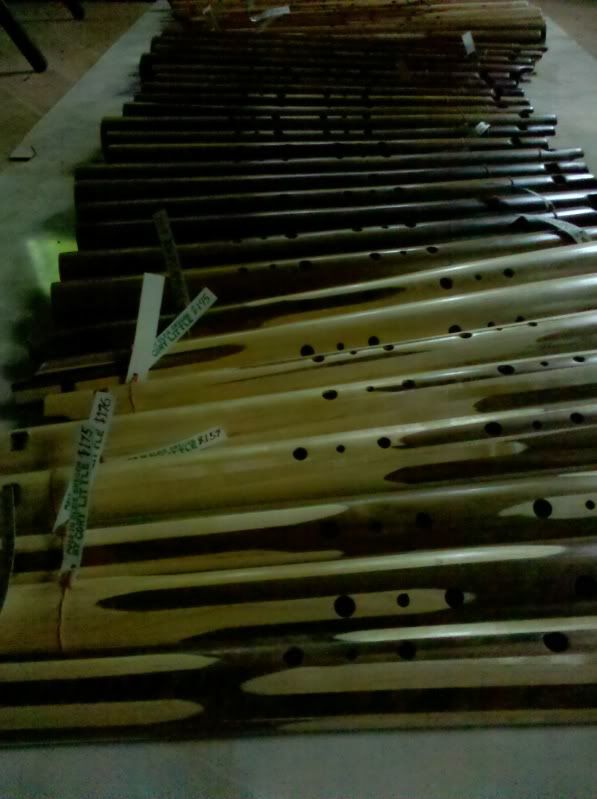In 2012 I made my first staved transverse flutes, they were nice sounding mahogany tubes, made by gluing angled strips of wood into a tube, but they were not easy to play. So while I was very exited to be able to use my knowledge as a music major, in my woodworking, it was not paying the bills.. There was short length of a tapered tube laying around my shop, it had been cut off the top of a thick oak didgerydoo many years ago, and had never found a purpose. In March of 2012 I stuffed a dowel in the end, channeling the air across a recorder style fipple, and it worked..

I quickly produced a batch of 15 tapered tubes, and turned them into flutes, and out of those, only 5 of them worked. I enjoy challenges and puzzles, so dispite the economic setbacks, I spent the rest of 2012 making "prototypes". Most were gifted to friends and family. I was inspired by "flute-boxing" videos to expand the mouthpiece. While working with this funnel shaped blow chamber, I found that the wet-out issue could be eliminated by creating a smooth rolling turbulence, allowing for a wider channel. I did this by using a spoon shape on the lower portion, and compressing the air with a shape like the profile of a cattle horn. This creates an eddy effect that changes location depending on how hard you blow. This causes more air to come up through the fipple hole when you blow harder, bringing out better high notes, and more air to pass under when you blow slow, giving better bass resonence. By the end of 2012, I had full confidence in my ability to resonate a tapered sound champer. I settled on minor diatonic tuning, because it can also play the relative major, and my personal favorite, the blues pentatonic..
I spent spring of 2013 in production of dozens of elaphones, a name I derived from the first letter of my last name.(I tell folks it means "elegent sound"). I knew it was not yet selling season, so I just kept producing, and unlike the drums that require $20-30 in material to make, I can make elaphones with just; time, energy, and wood glue. Since I have several gallons of glue (TB2), and I use recycled wood, all it took is gas for my generator. I carved stamps to mark my work in January, and I added peace symbols to the mouthpieces in March.
I made a sound demo on soundcloud, it can be found by looking up elaphone, or my name.
I took them to the rainbow gathering in Montana in July, and traded one for a crystal ball, I could have traded them all..
They were a hit at the Indidjinus festival in August, and are now in the hands of performing musicians.. One went to a young beatboxer,.. and I can't wait to see him on stage with it next year.
I attempted to add a definition to wikipedia, but it got taken down, and I recieved a harsh email from a moderator.
so here's my questions to seed the topic:
when was the last time a new woodwind was accepted?
do you think the elaphone a new instrument??


